-
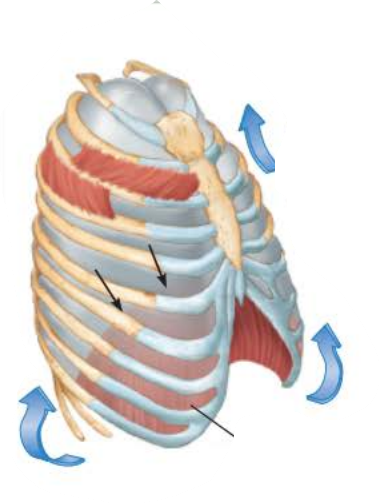
Inhalation 1/5
name the muscles involved and the action they perform
diaphragm contracts and moves inferiorly
external intercostals contract and elevates ribs and sternum
-
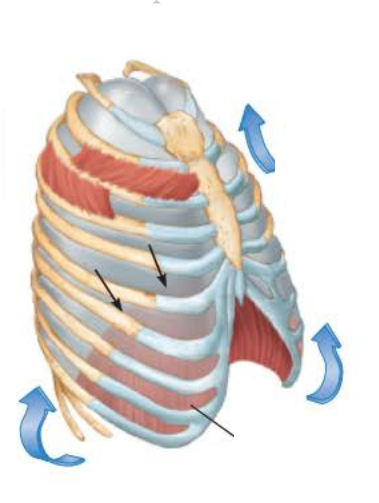
Inhalation 2/5
thoracic cavity volume increases
-
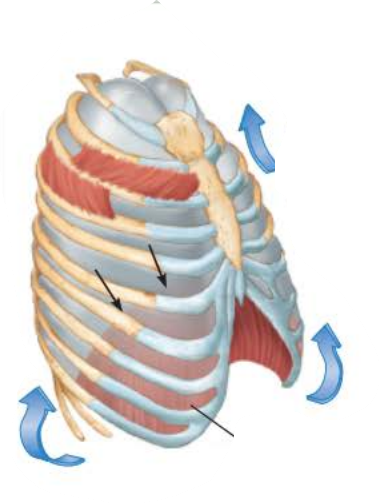
Inhalation 3/5
Lungs are stretched
increases intrapulmonary volume
-
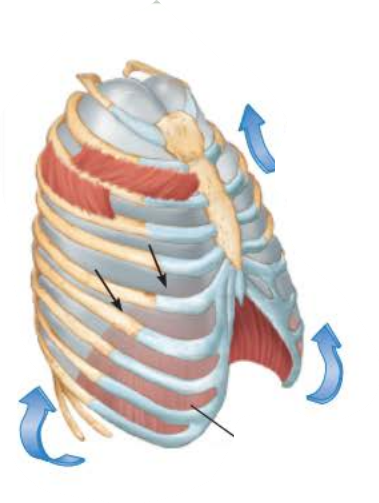
Inhalation 4/5
Intrapulmonary pressure drops to -1 mm Hg
-
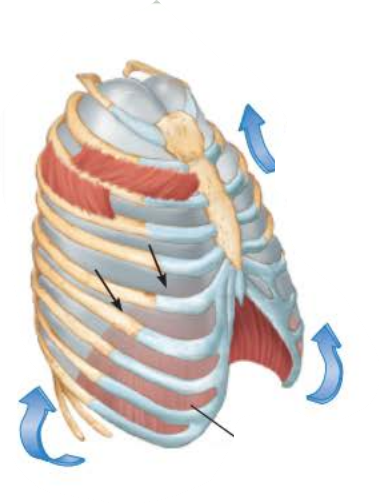
Inhalation 5/5
gasses flow into lungs down the pressure gradient until intrapulmonary pressure is 0 and equal to atmospheric pressure
-
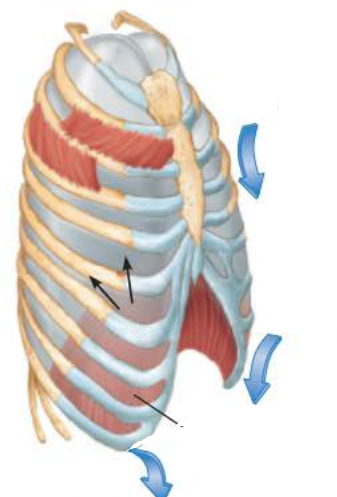
Expiration 1/5
name the muscles involved and the action they perform
diaphragm relaxes moves superiorly
external intercostals relax and depresses ribs and sternum
-
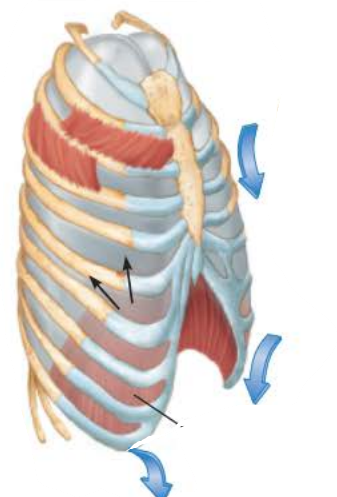
Expiration 2/5
thoracic cavity volume decreases
-
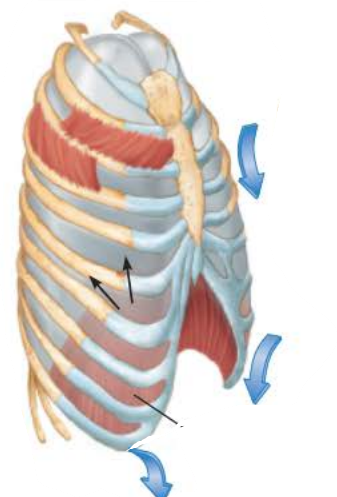
Expiration 3/5
elastic lungs recoil passively and decreases intrapulmonary volume
-
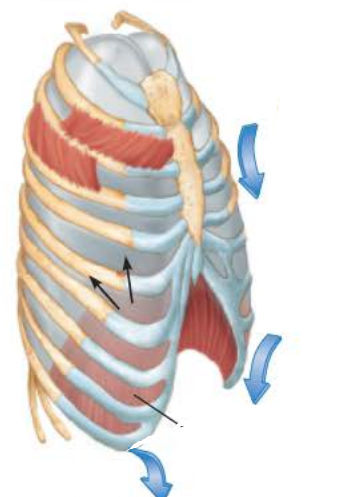
Expiration 4/5
intrapulmonary pressure rises to +1mm Hg
-
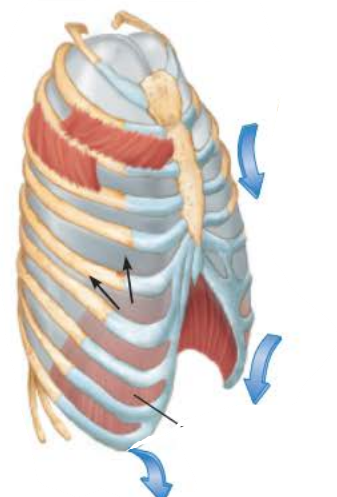
Expiration 5/5
Gasses flow out the lungs down the pressure gradient until the intrapulmonary pressure is 0 and equal to atmospheric pressure

